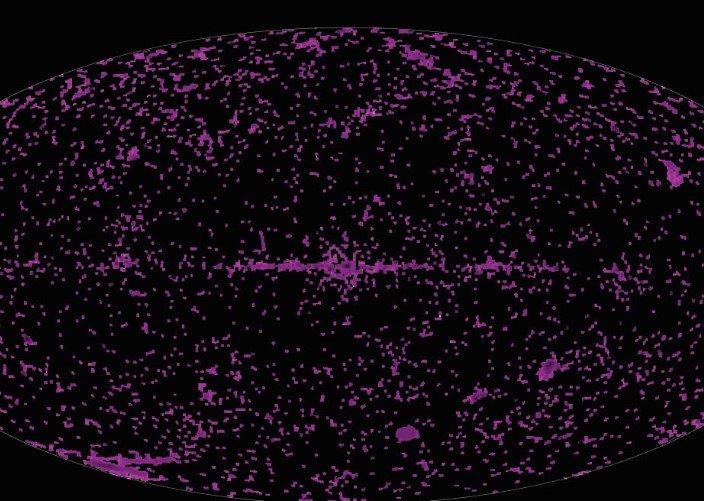Mapping the Cosmic Web
For years, scientists have gathered data from the eRosita observatory, which specializes in X-ray observations of the cosmos. This extensive analysis has led to a revelation of regions filled with hot plasma extending across vast distances—light-years, in fact. These plasma-rich regions form narrow channels that resemble tunnels, connecting distant parts of space in ways we’ve never seen before.
This new discovery suggests that space is not just a void between stars and galaxies, but a vibrant and dynamic web, shaped by events that occurred billions of years ago. The intricate plasma pathways discovered are the result of colossal stellar explosions—supernovae—that have left their mark on the structure of the cosmos.
The Role of Supernovae in Cosmic Tunnels
Supernova explosions, the violent deaths of massive stars, are not just spectacular events; they are also key architects of these cosmic tunnels. When a massive star explodes, it expels enormous amounts of energy and creates bubbles of hot plasma. These bubbles don’t just dissipate; they interact and connect with other structures in space, forming a vast network of energy-transmitting pathways.

These interconnected plasma pockets are not isolated phenomena. They are part of a larger cosmic web, carrying energy, materials, and even information across the vast expanses between galaxies. The tunnels created by these stellar events are, in a sense, highways through space, facilitating movement and exchange on a galactic scale.
Cosmic Tunnels: A New Understanding of the Universe’s Structure
While astronomers have long known that the universe is filled with complex structures—like galaxies, clusters, and dark matter—the discovery of these cosmic tunnels adds an entirely new layer to our understanding. What we once considered empty space is now revealed to be an interconnected and dynamic network of energy and matter.
The eRosita observatory’s X-ray data has allowed scientists to map these tunnels with remarkable precision. The pathways stretch across the cosmos, linking clusters of galaxies and even connecting regions within our own galaxy. This revelation challenges the traditional view of space as an empty void, instead showing that it’s a complex and active environment, shaped by ancient events and constantly evolving.
How the Cosmic Tunnels Impact Our Understanding of Space
This discovery could have far-reaching implications for how we study and understand the universe. The existence of these tunnels suggests that energy and material are continuously flowing across vast distances, influencing the growth and movement of galaxies. This new understanding could change the way scientists approach the study of galaxy formation and evolution.
Furthermore, the fact that these cosmic highways are the result of supernova explosions highlights the role of stellar death in shaping the universe. Supernovae, once seen primarily as dramatic and brief events, are now understood to be central to the creation of the very fabric of space itself.
The Future of Cosmic Exploration
As we learn more about these cosmic tunnels, it’s possible that future space missions may seek to explore these regions of hot plasma. This could open up new avenues for studying the physics of high-energy environments and understanding the processes that govern galaxy formation and evolution.
While we are still in the early stages of understanding these cosmic tunnels, this discovery represents a monumental leap in our quest to unravel the mysteries of the universe. It reminds us that, even in what seems like the emptiness of space, there is much more than meets the eye.
